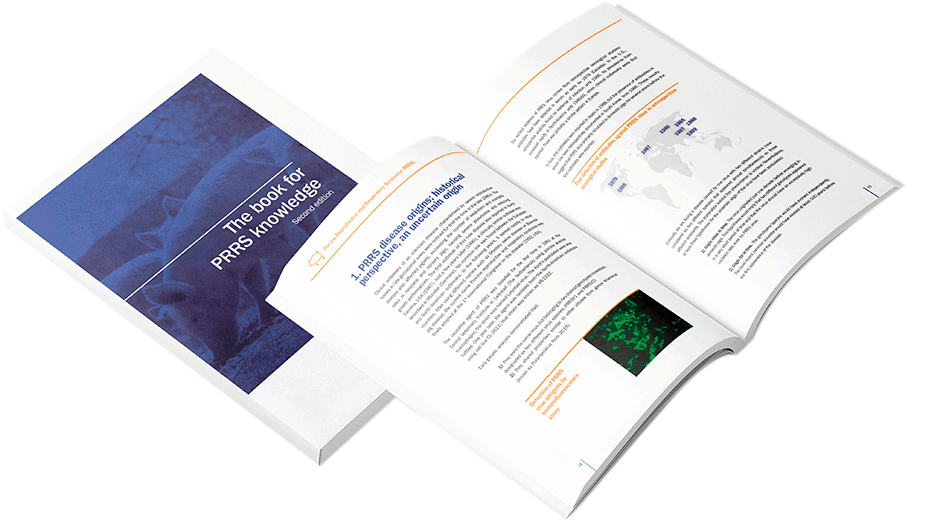1
Transmission between herds
The most frequent routes of PRRS virus transmission between herds are the introduction of infected animals and the use of contaminated semen. PRRS virus is spread mostly by semen and direct contact with infected animals. In the second case, the highest risk situations are introduction of positive replacements in reproductive herds, or introduction of weaned piglets from different sources (positive and negative) in fattening units.
2
Transmission within herds
Direct, horizontal transmission. Shedding routes: Infected pigs can shed virus from multiple routes and for long time; mainly by saliva and semen; less frequently in milk and colostrum, and rarely and sporadically in nasal secretions, urine and feces. The amount of virus shed, together with the duration of the shedding, vary significantly among strains.
3
What happens in a confirmed PRRS virus farm?
The final outcome of a PRRS virus infection on a farm will mainly depend on the virulence of the strain and the previous immunisation status of the herd. Once PRRS is introduced into a farm, it will tend to circulate indefinitely. Spontaneous elimination can occur, especially on small farms, but it is rare. The presence of persistent infection in carrier animals, together with the presence of negative subpopulations in the herd or a continuous flow of susceptible animals –replacement, birth of piglets from seronegative sows, by loss of passive immunity in piglets or by loss of active immunity in previously infected pigs- can perpetuate the infection.
4
How many strains can be found within a given farm?
The answer is quite simple: a priori, there is no limit. In order to further explore this subject, some of the available data are discussed below. In the past, it was thought that recombination between different PRRS virus strains was an uncommon phenomenon. However, examination of full-length genome sequences has demonstrated that:
5
How to quantify PRRS virus transmission?
The knowledge of the dynamics of PRRS virus circulation within a herd and the quantification of the virus transmission in a pig population are key points for the development of prevention and control strategies of the infection, as well as for evaluating the impact of such interventions.



